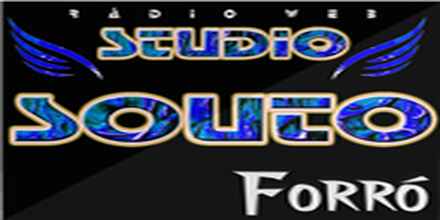Forró is a vibrant and lively musical genre that originates from northeastern Brazil, particularly in the states of Pernambuco, Paraíba, Rio Grande do Norte, and Ceará. The term "forró" itself comes from the word "forrobodó," which means a big party or celebration. This genre is deeply rooted in the cultural fabric of the region, reflecting the joy, passion, and resilience of its people.
Forró music is characterized by its upbeat rhythms, often played with traditional instruments such as the zabumba (a large bass drum), triângulo (triangle), and accordion. The accordion is particularly central to forró, providing the melody and driving the rhythmic structure. Other instruments like the pandeiro (tambourine) and the saxophones can also be featured, adding layers of complexity and richness to the sound.
There are several sub-genres within forró, each with its unique style and instrumentation. Traditional forró, or "forró pé-de-serra," emphasizes the acoustic instruments and is often played at slower tempos, allowing for more intricate melodies and improvisation. This style is beloved for its authenticity and connection to the genre's rural roots.
On the other hand, "forró eletrônico" incorporates modern electronic elements into the traditional sound, creating a more contemporary and dance-oriented experience. This sub-genre often features synthesized beats and electronic effects, appealing to younger audiences and those who enjoy a more upbeat, club-friendly atmosphere.
Another notable sub-genre is "universitário forró," which emerged in the 1980s and 1990s among university students in northeastern Brazil. This style blends traditional forró elements with influences from other genres like rock and pop, resulting in a more modern and eclectic sound. It is often characterized by its energetic rhythms and catchy melodies, making it popular at social events and parties.
Forró dance is an essential component of the genre, known for its close partnering and intricate footwork. The most famous forró dance is called "forró de duas," which involves a couple dancing closely together, with the man leading and the woman following. This style emphasizes communication and connection between partners, as well as fluidity and grace in movement.
The lyrics of forró songs often revolve around themes of love, longing, and everyday life in northeastern Brazil. They are typically sung in Portuguese and can range from romantic ballads to humorous and playful narratives. The storytelling aspect of forró lyrics adds depth and emotional resonance to the music, making it relatable and engaging for listeners.
Forró has gained international recognition over the years, with festivals and events dedicated to the genre taking place around the world. These celebrations often feature live performances by renowned forró musicians, dance workshops, and social gatherings where people can enjoy the rich cultural experience that forró offers.
In Brazil, forró is more than just music; it is a way of life. It brings communities together, fosters social connections, and celebrates the unique heritage of northeastern Brazil. Whether played at a small family gathering or a large festival, forró music has the power to uplift spirits and create lasting memories.
The influence of forró can be seen in various aspects of Brazilian culture, from fashion to cuisine. Traditional clothing often features bright colors and intricate patterns, reflecting the vibrant spirit of forró. Food served at forró events typically includes regional specialties like tapioca, acarajé, and churrasco, adding to the overall sensory experience.
In recent years, there has been a resurgence of interest in traditional forró, with many young musicians and dancers embracing the genre's roots while also innovating and experimenting with new sounds. This blend of tradition and modernity ensures that forró continues to evolve and thrive, captivating audiences both locally and globally.
Forró is a testament to the richness and diversity of Brazilian music, offering a unique blend of rhythm, melody, and cultural expression. Its ability to bring people together through dance and celebration makes it a cherished part of Brazil's musical heritage. Whether enjoyed in its traditional form or as a modern interpretation, forró remains a vibrant and dynamic genre that continues to inspire and entertain.
 Geracao ForroGeracao Forro
Geracao ForroGeracao Forro 151
Brazil Forro
151
Brazil Forro
